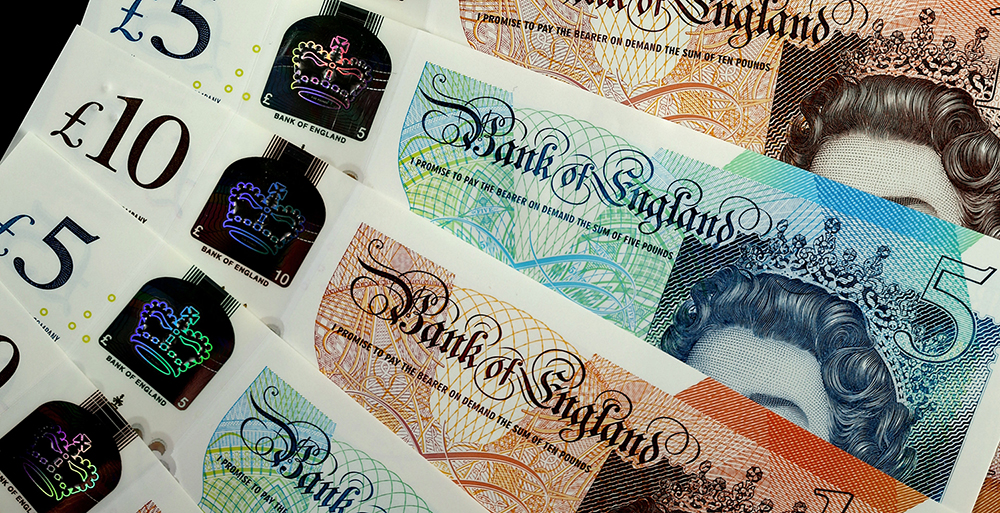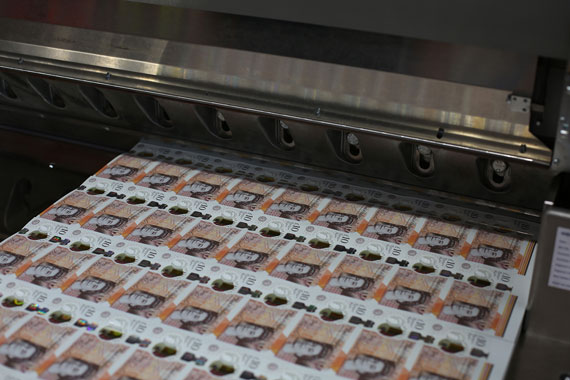When did the Bank of England start printing banknotes?
We’ve been printing banknotes for over 300 years, although the way we do it has changed a lot over that time.
For instance, when we started out in the 1690s, we did not issue any notes worth less than £50. Since incomes were typically lower than £20 a year, most people went through life without ever touching a banknote.
During the 18th century, notes of a smaller value were introduced. Since the mid-1980s there have been four denominations of banknotes in circulation: £5, £10, £20 and £50.

Why do we sometimes issue new design banknotes?
Confidence in our banknotes is important to keep the economy working. Although cash use is in decline, we expect it to remain a critical way for people to pay in the foreseeable future. In the UK there are currently over £70 billion worth of banknotes in circulation. So we need to make sure the notes we produce are high quality, long-lasting and difficult to counterfeit. To achieve this we change the design of our notes from time to time.
The latest development is to print new notes on polymer – a thin, flexible plastic. We released the new £5 note in September 2016 and the new £10 note a year later. The new polymer £20 note will enter circulation in 2020. In October 2018 we announced that a polymer £50 note will be issued after the polymer £20 note.
Why are new banknotes made of polymer?
The new polymer notes allow for enhanced security features, such as the see-through window and holograms. This makes them harder to counterfeit than paper notes.
They’re stronger, too: a polymer fiver is expected to last two-and-a-half times longer than the old paper £5 note. Although, while our notes are stronger, they are not indestructible – so you should still take care of them.
The life expectancy of polymer notes also makes them more environmentally friendly. The Carbon Trust has certified that the carbon footprint of a polymer fiver is 16% lower than its paper predecessor.
Finally, polymer notes are cleaner since their smoother surfaces are resistant to dirt and moisture.

